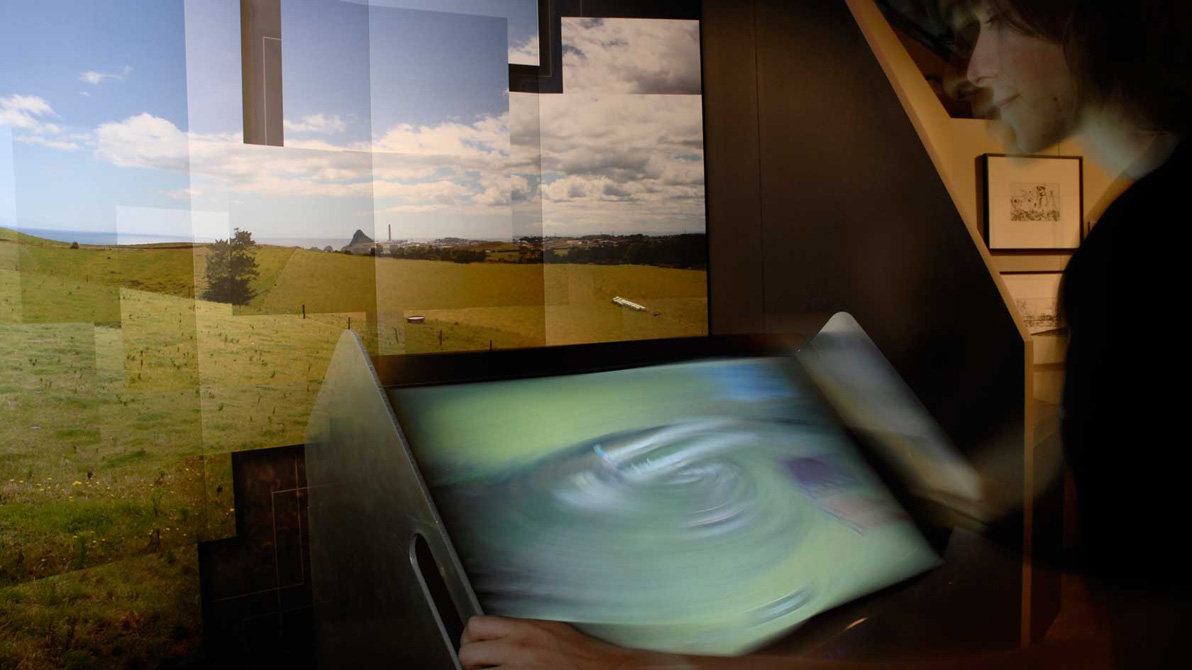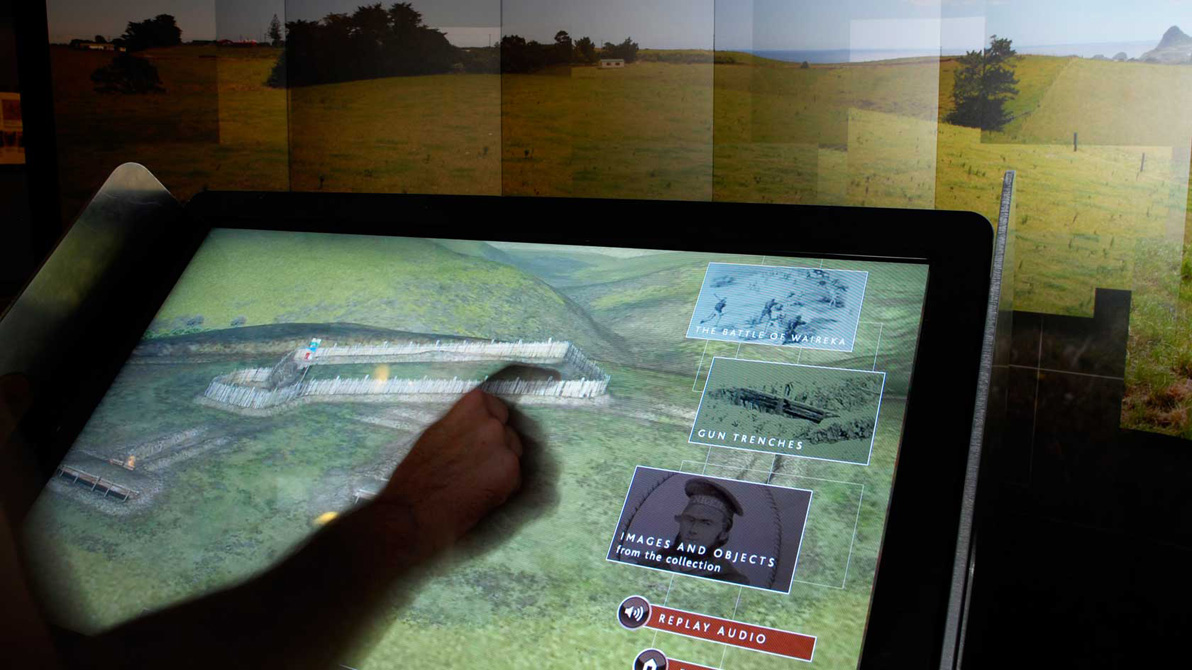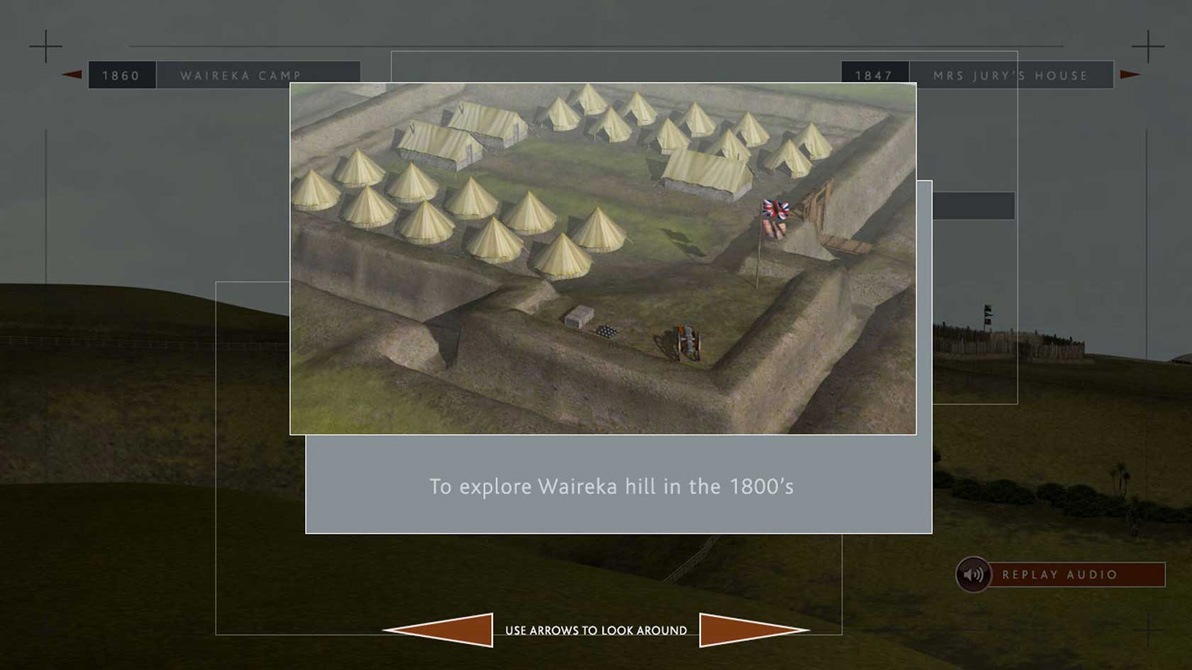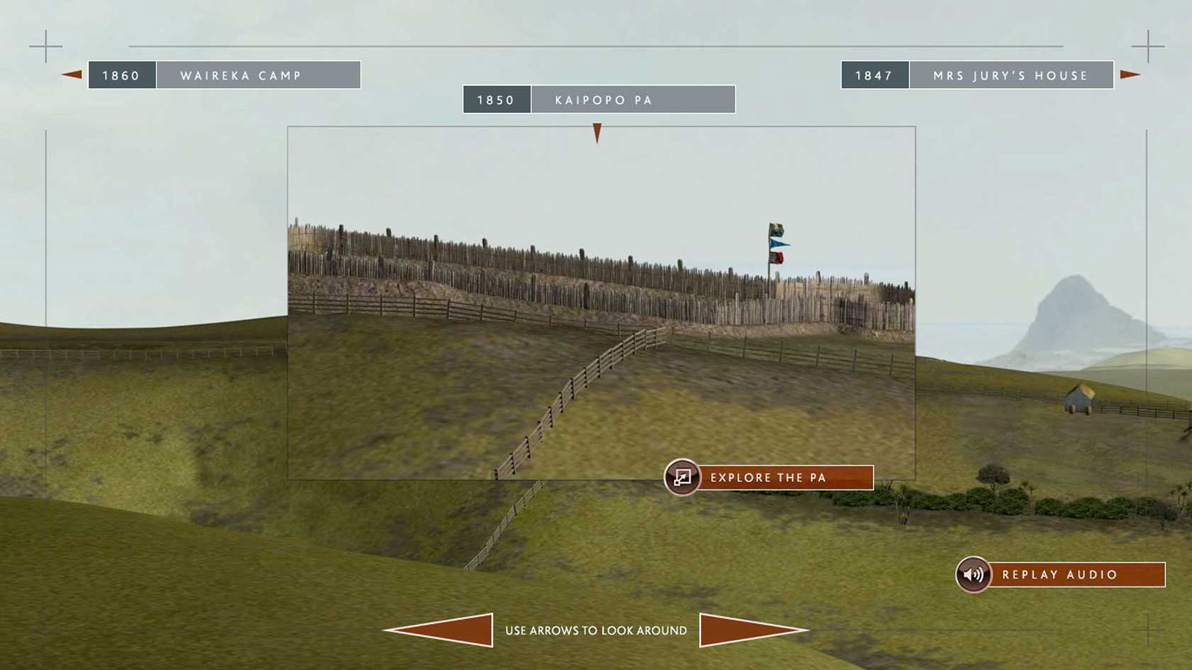A window into another reality
Client: Puke Ariki
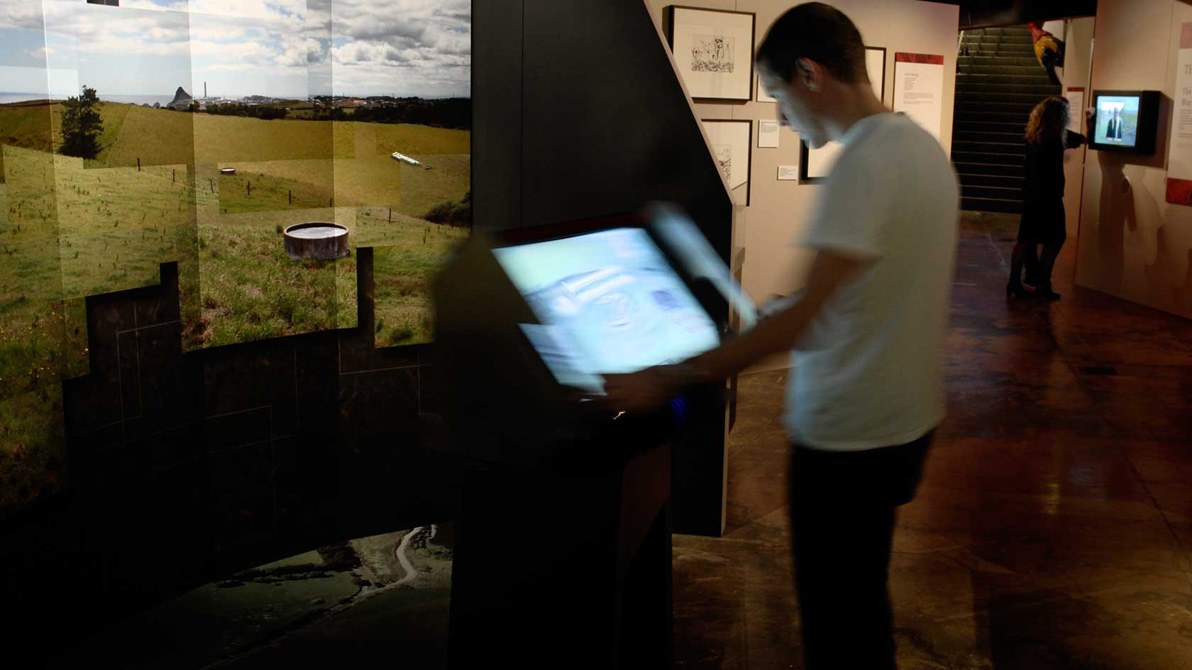
Puke Ariki‘s mission was to tell five unique stories about Taranaki.
The fifth of these exhibitions documented the potentially contentious history of the Taranaki Wars.
The exhibition told the story of a bitter period of local history that is still felt acutely today, the legacy of which affects the whole of New Zealand.
The Problem
We were briefed to provide engaging, contemporary, interactive digital content to help tell the story of Taranaki War – specifically, to bring to life a particularly complex battle that occurred on the outskirts of New Plymouth. The research provided was wide ranging and deep, and our work on earlier exhibitions provided useful insights into audiences’ needs.
The Solution
Our approach was to develop an interactive that was immersive and reflect the scale and impact of the story. The concept developed was expressed as a ‘window to the past.’
This resulted in the idea of an interactive with two parts – both using computer generated models to show what structures were in place at the two sites:
- a series of animations and videos on an interactive timeline, and
- an ambitious revolving touchscreen which faced a large-scale photograph of the location as it appears today. As it turns, the screen displays an ‘augmented view’ of the location showing what the hill looked like in the 1840s.
This allowed us to make it accessible, engaging and capture the imagination of our audiences. The screen constantly knows where it is facing. Users can also touch the screen to get more detailed information and through on-screen instructions, users could get more detailed information on different locations.
The approach required the development of a unique exhibition arrangement. We researched technologies and engaged specialist engineers to develop the physical elements including the cabinetry and robotics for the interactive display unit.
The creative process started high-level, organising content, modelling the interactive idea, and formulating the technology requirements. We went back over each component as the project evolved, detailing more of the design.
The immediate challenge was to make the physical connection with the turning mount of the display unit translate into panning the 3D environment on screen. The solution in the end was to insert mechanics and electronics into the mount shaft that would fire a signal to the touch screen.
The application itself was built in Flash and published as a stand-alone desktop application. This allowed us to match up key frames in a Flash time-line with panning videos of the 3D environments produced in 3D modelling software. By placing the video into a Flash time-line we could literally move the play head along one frame at a time either forwards or backwards, thus giving the illusion of panning in a 3D space.
Rapid prototyping was a key contributor to the success of the development process.
The exhibition had to hold its own under varying conditions (adults and kids interacting, groups and individuals engaging different times of the day and for different lengths of time). And to be continuously ready for action during museum opening hours with little if any support from staff.
We did rigorous testing in our studio and on site at Puke Ariki. A restart once a day was all it took to make the exhibit run smoothly, every day.
